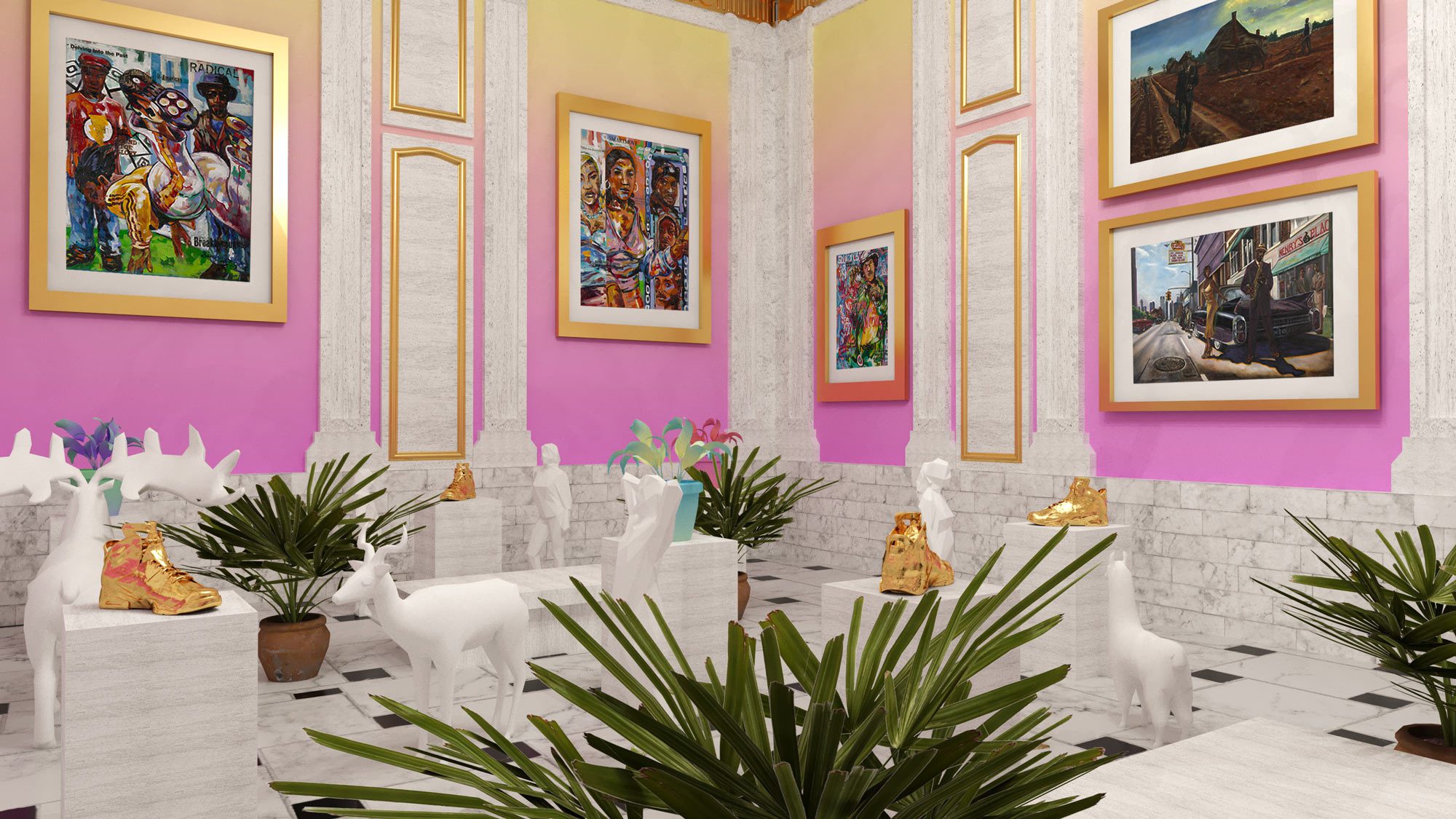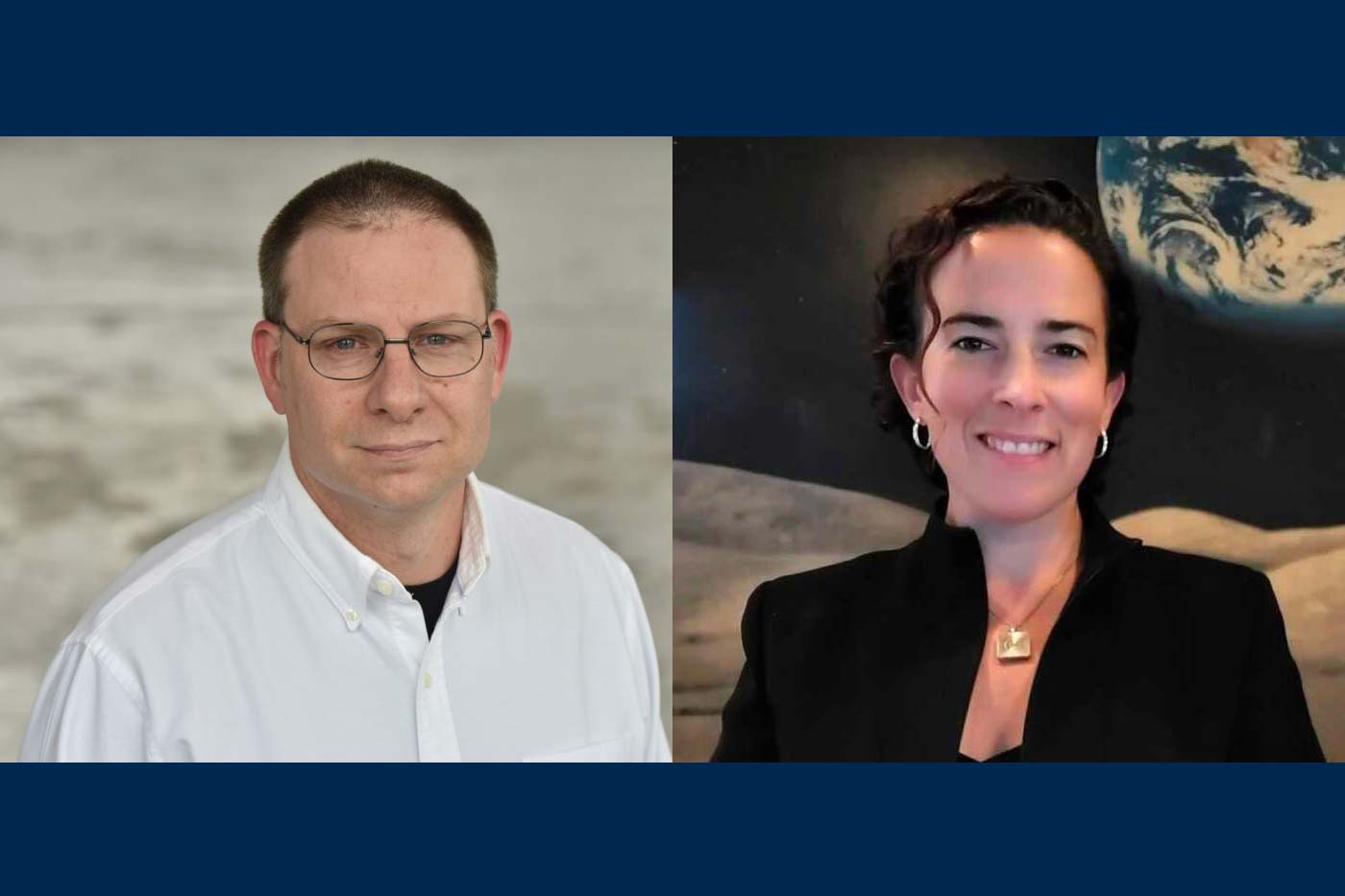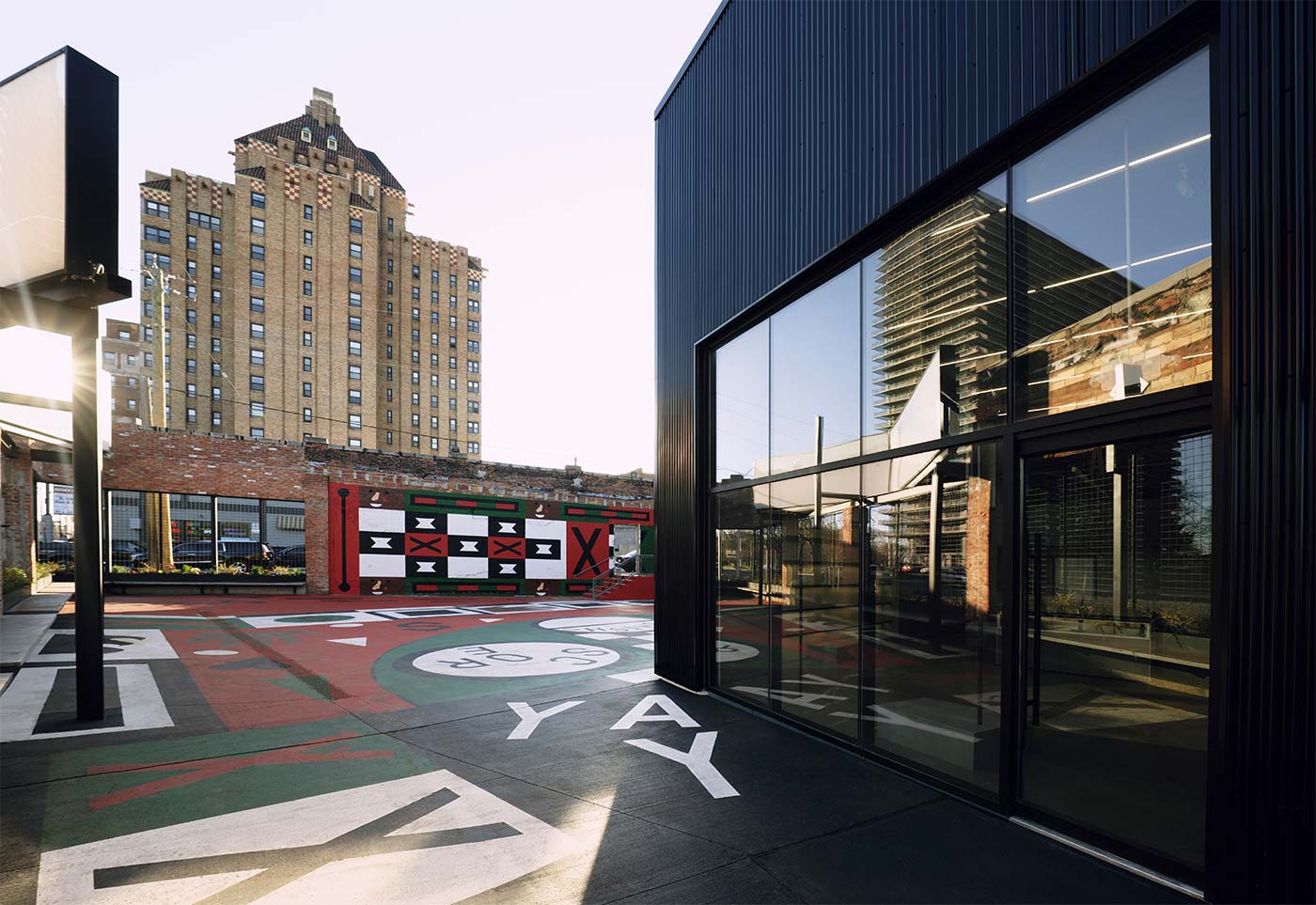
Portico Spring 2021: In-the-Field Design with an Impact
The Taubman Public Design Corps builds partnerships between student designers and local nonprofits
Last year Detroit resident Torri Smith, M.Arch ’21, saw firsthand how the coronavirus pandemic impacted vulnerable families and children. She wanted to find a way to use her architectural design skills to help those in need and to give back to her community.
Smith got that opportunity with the Taubman Public Design Corps, a new program that connects architecture and urban planning students with socially focused nonprofit organizations in southeast Michigan.
Over a six-week period in June and July, Design Corps student teams tackled pressing economic, environmental, social, and spatial challenges at six nonprofits. Putting their design tools, analytical skills, and imaginations into action, the students created both onsite and virtual solutions. Their work included designing outdoor activity areas, virtual arts and culture spaces, food distribution venues, and community outreach platforms.
“The Design Corps really inspired and influenced me,” Smith says. “I had an opportunity to work with nonprofit leaders and community members, which is not something we usually get to do as students.”
Taubman College launched the Public Design Corps to fulfill students’ growing desire to perform pro bono work for organizations serving disadvantaged families and individuals in metro Detroit. The initiative was met with enthusiasm by nonprofit leaders, who often cannot afford professional architectural services.
“There are many ways architects and designers can shape and inflect the future of a community organization,” says Anya Sirota, associate dean for academic initiatives. “They can offer organizational or urban strategies, as well as plans for the short- and long-term evolution of institutional infrastructure.”
The Design Corps’s community-centric focus and hands-on approach created a unique experience outside the bounds of the traditional studio. By challenging students to apply their academic theory and training to actual clients in real time, the program created an experiential bridge from the classroom to the professional world.
“We framed the Design Corps to teach our students real skills through fieldwork and collaboration with mission-driven community organizations,” says Sirota. “We wanted to offer boots-on-the-ground experiences within the context of a supportive institution committed to their academic and intellectual evolution.”
Faculty advisers, including Design Corps co-founders Irene Hwang and María Arquero de Alarcón, mentored the teams as they navigated the process of assessing an organization’s needs, proposing and refining design options, and completing their work in just six weeks.

The Zimbabwe Cultural Center of Detroit worked with a Taubman Public Design Corps team as part of its relocation to a larger public building in its same neighborhood.
“These projects were evocative and exciting for our students because they were grappling with complex conceptual issues that demanded finesse and an understanding of the cultural context and economic requirements,” Sirota explains.
Jacob Comerci, academic innovation program manager and Design Corps adviser, says student designers often had no clearly defined objectives when they first met with nonprofit groups. The teams took the initiative to identify underlying issues and obstacles and then collaboratively created and implemented novel design solutions.
“We were building the airplane while in it,” Comerci says. “The students’ confidence grew tremendously as they accomplished what they set out to do.” Based on the high level of interest in the Design Corps from students and nonprofit groups, Sirota says, “we’re now looking for strategies to institutionalize this effort and make it sustainable and equitable for everyone involved.”
Bringing families together, apart
Torri Smith’s team partnered with Brilliant Detroit, which offers early childhood education and family services at eight community hubs anchored in renovated houses. After the pandemic curtailed its programming, the organization applied to the Public Design Corps for help. The students developed proposals for reconfiguring the existing floor plans of three houses to create safely distanced indoor spaces for family activities. They also proposed redesign options for the backyards and front porches to provide kid-friendly outdoor areas.
“The students showed their technical skills in architectural design, as well as a real passion for our mission,” says Emma Laut, Brilliant Detroit’s senior operations manager. “They helped us face the world of the pandemic in a way that brought hope and greater safety for everyone.”
Designing a virtual arts center
Ishan Pal Singh, M.Arch ’20, joined the Public Design Corps to gain a different perspective on design and real-time experience through pro bono work.
“In college, you design for yourself,” he explains, “but when you work with a nonprofit organization, your design must meet the clients’ needs.”
Singh volunteered for a project at the Carr Center, a multidisciplinary arts-presenting organization located in Detroit’s historic Park Shelton building.
“We have a family-like relationship with our audience,” says curator Erin Falker Obichigha. “With the onset of the COVID-19 pandemic, we needed a way to gather people around the arts virtually and give them an authentic Carr Center experience.”
To achieve that goal, Singh and his teammates developed comprehensive plans for the Carr Virtual Center, an online platform featuring four interactive galleries and a performance studio to showcase live and pre-recorded events. The team used current photos and historic floor plans to give the virtual arts and performance space a vintage museum-like feeling, with a digital flair. They also created a virtual café to encourage real-time online conversations among visitors who come to the website to listen to concerts or view art exhibitions.
“I want my professional life to include public-interest work, and this was a stepping stone toward that goal,” Singh says.
Advancing LGBT outreach
For Max Coolidge, B.S. ’22, the Public Design Corps was personal. “I’m gay and I wanted to work with an organization that helps my community,” says Coolidge, who worked with SAGE Metro Detroit to advance the advocacy and services they provide to LGBT older adults.
His team started with a “blank slate” and quickly determined that the organization needed marketing and archival materials to procure grant funding to sustain its outreach operations. The students recorded video interviews with five SAGE founding members and edited those narrations to create compelling testimonials and a promotional video for fundraising.
“The passion and commitment of the students far exceeded our expectations, and the quality of their products was top-notch,” says executive director Angie Perone.
Coolidge not only learned how to work collaboratively and communicate with a client but also forged valuable personal and academic relationships. “The experience reinforced my desire to stay in architecture and to try to make a difference in the community,” he says.
—Claudia Capos









